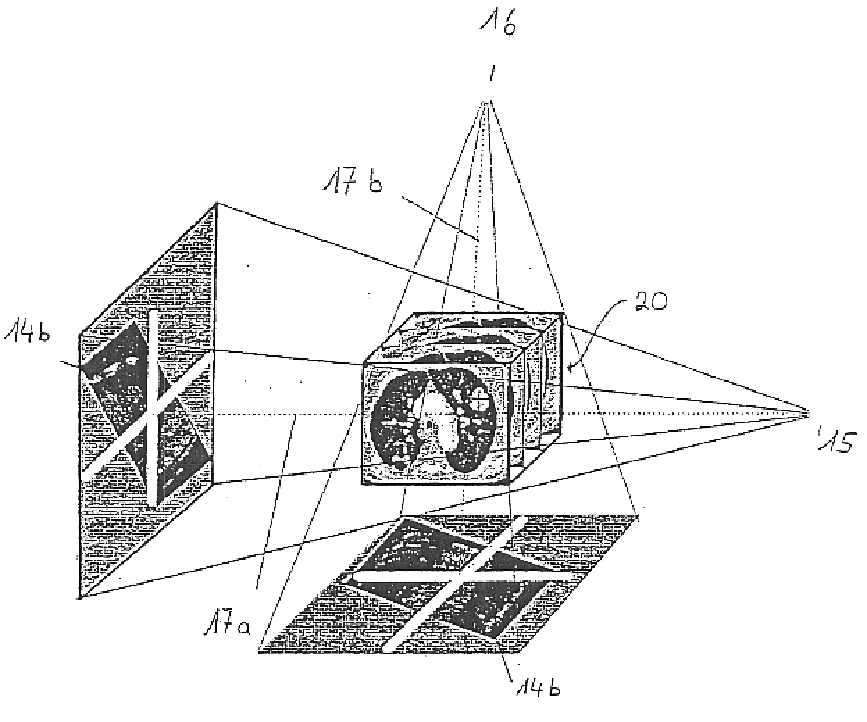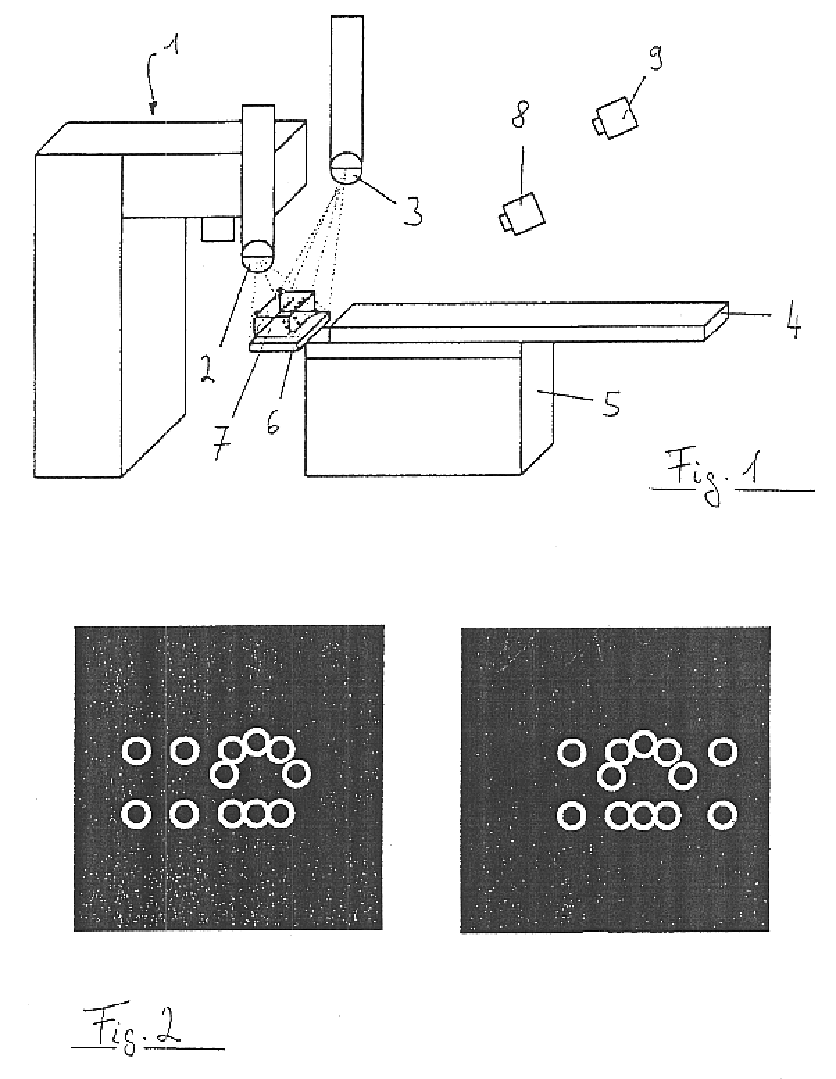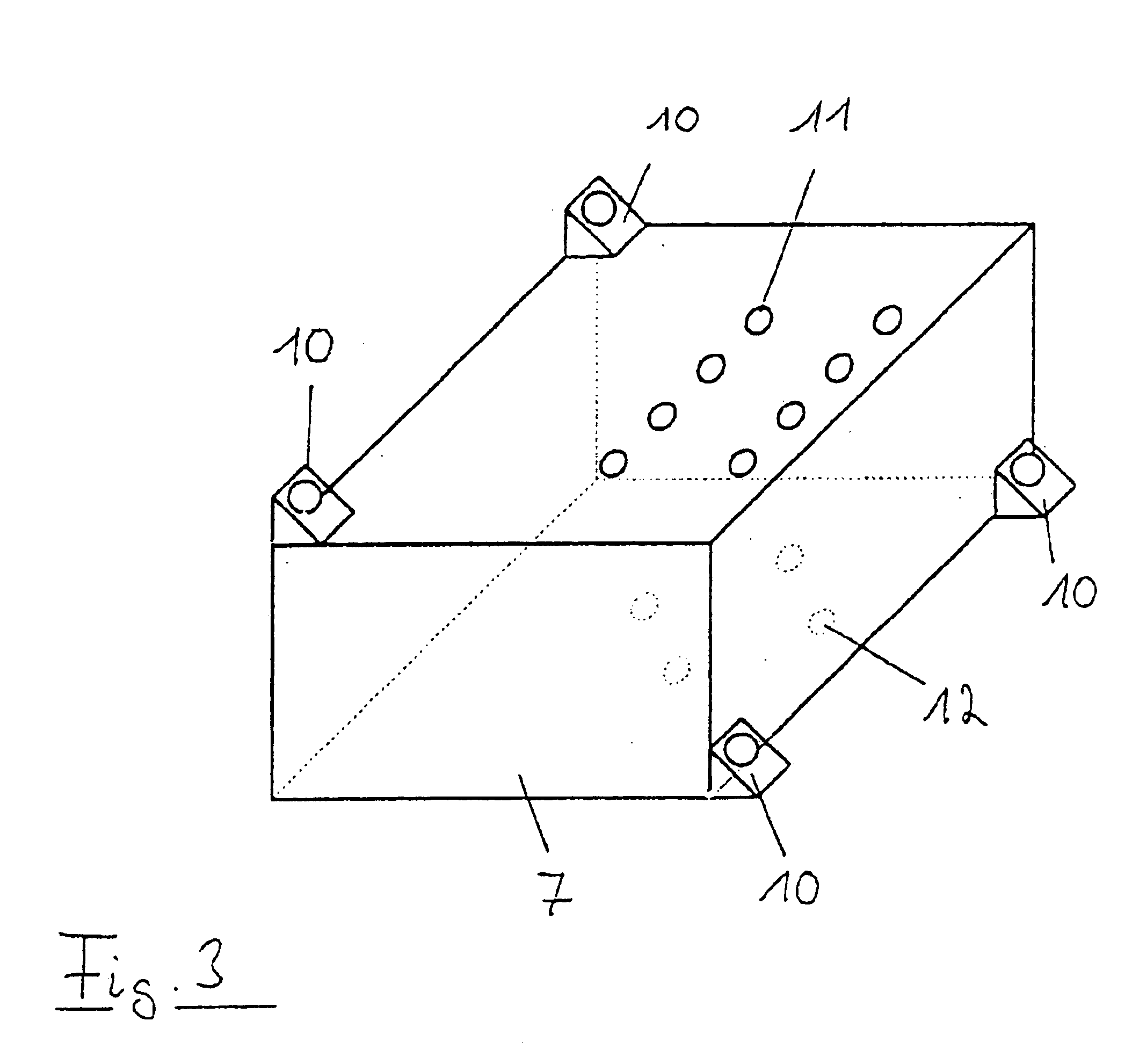Method and device for accurately positioning a patient in radiotherapy and/or radiosurgery
- Summary
- Abstract
- Description
- Claims
- Application Information
AI Technical Summary
Benefits of technology
Problems solved by technology
Method used
Image
Examples
Embodiment Construction
Referring to the figures mentioned above, those components of the device in accordance with the invention will now be described which are necessary for carrying out the preferred embodiment of the invention described here. The device comprises two x-ray tubes 2, 3 mounted to the ceiling of a radiotherapy room, which in other embodiments may also optionally be fixed in or on the floor.
Furthermore, an x-ray detector 6 (image recorder) made of amorphous silicon is provided, fixed to a support 5 for a patient table 4. The x-ray detector can be moved vertically using the support 5, the patient table 4 can however be moved horizontally, independent of the detector 6. In other embodiments, the detector can consist of another material, or can be an image intensifier; it can also be fixed to the floor or to the ceiling, according to the location of the x-ray tubes.
The device further includes an infrared tracking system with cameras 8, 9 for tracking passive markers 10, 13 (FIG. 3 and FIG. 7)...
PUM
 Login to View More
Login to View More Abstract
Description
Claims
Application Information
 Login to View More
Login to View More - R&D
- Intellectual Property
- Life Sciences
- Materials
- Tech Scout
- Unparalleled Data Quality
- Higher Quality Content
- 60% Fewer Hallucinations
Browse by: Latest US Patents, China's latest patents, Technical Efficacy Thesaurus, Application Domain, Technology Topic, Popular Technical Reports.
© 2025 PatSnap. All rights reserved.Legal|Privacy policy|Modern Slavery Act Transparency Statement|Sitemap|About US| Contact US: help@patsnap.com



